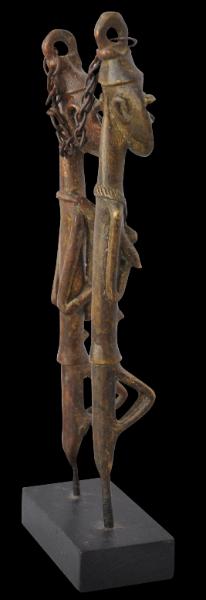
Yoruba Ogboni Edan Staffs
Pair of Brass & Iron Ogboni Society Staffs (Edan)
Yoruba People, Nigeria
circa 1880
height: 24.5cm (not including the stand), weight: 825g (including the stand)
These two figures known as edan have been cast in brass over iron rods. Each is a figure of the opposite sex and is in a sitting position. They are linked by a chain attached to loops to the tops of their heads. The figures resemble Onile, the owner of the earth, in both male and female forms. The figures have characteristic Yoruba features: almond-shaped eyes with heavy eye-lids, flared nostrils and fine lips; and their faces are express wisdom and authority.
The male figure has a chiselled beard and a protruding penis. He wears an edan around his neck which he holds with his left hand. His right hand holds a ceremonial knife.
The female figure wears a chiselled necklace. Her gesture of holding her breast is a reference to the traditional female role of providing nourishment or care, a reference to Onile’s provision for humanity. This gesture corresponds to the formal salutation between the Ogboni members where they prostrate upon the ground, clench their fists together with the left on top of the right with thumbs hidden, and the elder kisses the ground three times and each time declares, ‘The mother’s breasts are sweet’. Based on the forms of the figures, this edan probably was worn by a higher if not the highest ranked Ogboni member particularly in ceremonies worshiping the Mother Earth.
The set has a superb dark patina and contours softened by age and ritual use.
Edan are among the most fascinating sculptured objects in Yoruba culture. They are presented to an initiate into the higher ranks of a secret society,
Ogboni or Oshugbo. Ogboni is one of the most prominent Yoruba religious cult societies, which worships the owner of the earth, Onile. Its prime function is to harmonise all spirits and forces of nature. It is lead by the eldest and wisest man and woman from the community. The edan were worn around initiates’ necks, as symbols of rank, at society meetings and ceremonies. The casting over an iron rod signifies the union of the magical forces associated with brass and iron.
The non-rusting character of brass symbolises immortality – the desire for longevity and well-being. The union of the male and female figures by a chain represents the duality of Onile. Ogboni venerates Onile to ensure human survival, peace, happiness, and social stability in the community.
The edan are used in five main functions: judicial, oracular, healing, protective, and communication/surveillance (Roache, 1971). For the judicial role, it is believed that an edan placed upright by its spike on the ground will fall should a man not confess his guilt. For its oracular role, it is required to be present with its owner in ifa divination for predicting the owner’s future. The Ogboni society has its own odu, a set of sacred verses of the spiritual and ethical tradition of ifa, predictions; that relate to both mundane and spiritual prescriptions. For the healing role, the edan are sometimes shaped like a spoon for medicine preparation. For the protective role, the edan are worn or carried to keep the bearer from harm and witchcraft. For the communication and surveillance role, the edan are believed to have the power to travel in the form of a bird to disseminate messages as well as to watch over people.
According to Williams (1960), the Ogboni believed that a union of two Ogboni becomes three. The third entity is a mystery or a secret that sprung from the union of male and female as demonstrated in the edan. The secret may refer to the completion of life: from kneeling before the High God or Father Olodumare, receiving a personal destiny ori, entering the world of sexual, social, political and religious differentiation and opposition (Fagg & Pemberton 1982). The edan often was placed in places of conflict to demonstrate unity, reconciliation and adjudication of differences among mankind, and ultimately with the earth. The Ogboni society acted as a town council, a civic court, and even controlled over regents in local monarchies. Membership implied power and prestige, and this status generally was reinforced through the commissioning of religious and courtly paraphernalia. Williams (1964) argues that Ogboni art was absolute, static and linear as opposed to the formal theme of Yoruba carving: abstract, dynamic and architectonic. The membership is limited to the few people who achieve distinction through their profession and who prove to be of high integrity. Ogboni societies still exist among more traditional Yoruba today, but not to the same extent.
References
Bacquart, J. B., The Tribal Arts of Africa, Thames & Hudson, 1998.
Fagg, W. & Pemberton, J. III., Yoruba: Sculpture of West Africa, Collins, 1982.
Roache, L.E., ‘Psychophysical attributes of the Ogboni Edan’, in African Arts, 14(3): 48–53, 1971.
Williams, D., ‘The Iconology of the Yoruba Edan Ogboni’, in Africa: Journal of the International African Institute, Cambridge University Press and International African Institute, 1964.
Williams, P. M., ‘The Yoruba Ogboni Cult in Oyo’ in Africa: Journal of the International African Institute, Cambridge University Press and International African Institute, 1960.
Provenance
Private collection, France.
Inventory no.: 1399
SOLD

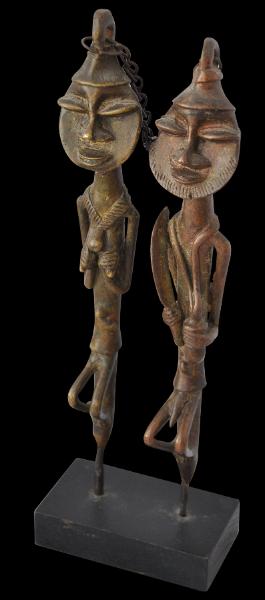
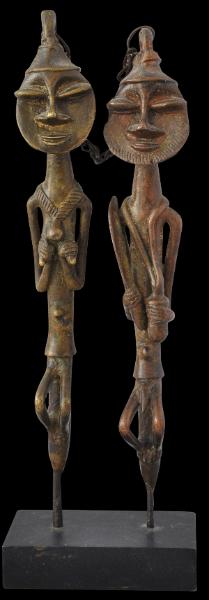

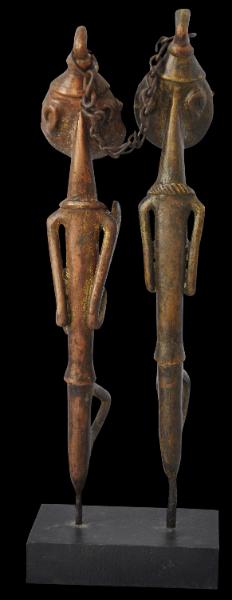
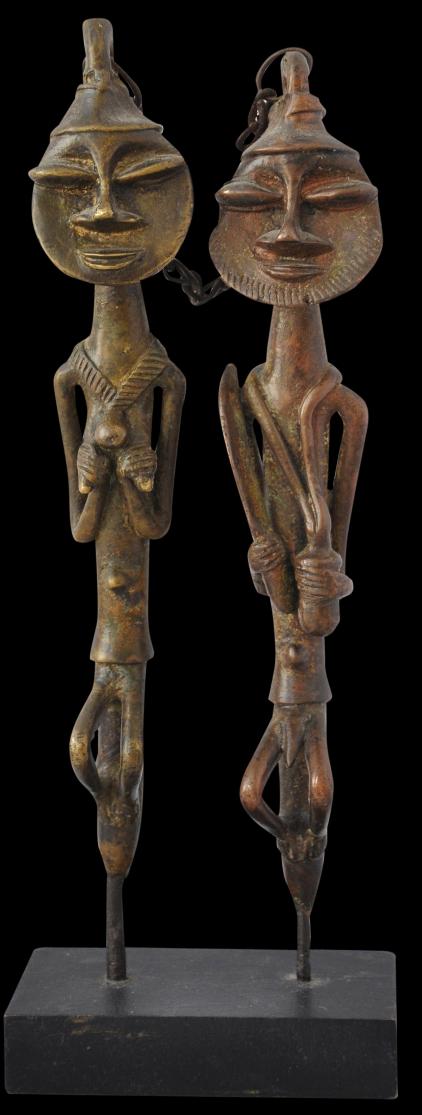
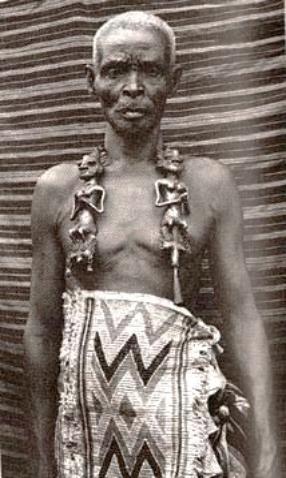
An Ogboni wearing edan around his neck.

